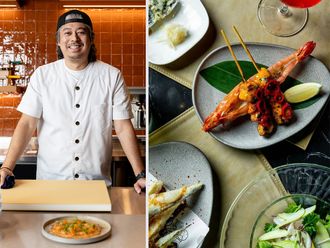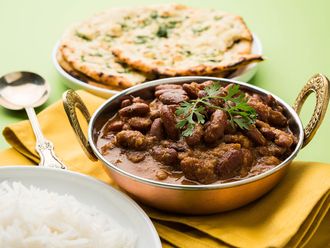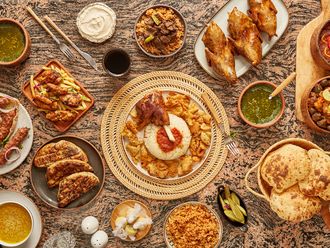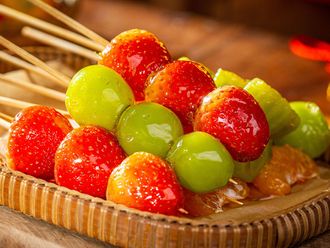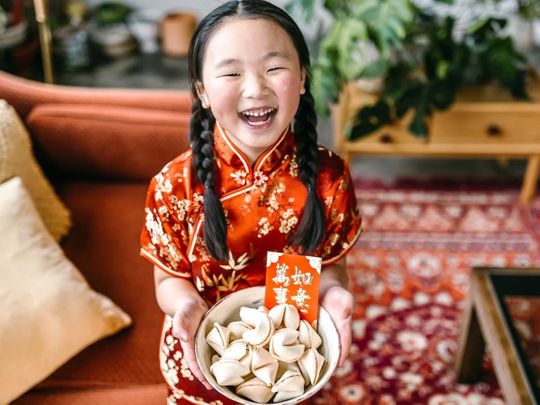
When you think about festivals, what comes to your mind? Lots of family and friends gathering and a table laden with delicious food?
The image that comes to my mind when I think about the most important festival in China – Spring Festival, in another word, Chinese New Year (CNY), is a beautifully spread dinner table. I come from the north of China, Hebei province.
It is the dinner grandparents and parents spend days, if not weeks, to prepare. It is the dinner that sums up an entire year’s hard work, and turns it into colourful, and delicious bundles of joy. It is also the dinner that is designed to carry people’s good wishes into the next year. Being a big fan of food and the culture of food, I always find festive dinner tables fascinating. In case you are also like me, you might be interested to know what a CNY Eve dinner table looks like. Here’s a glimpse of it ….
Common dietary habits
With a vast land across different longitudes and latitudes in China, CNY Eve dinner table looks different from one region to another, due to seasonal and habitat diversities. However, common food and dietary habits still exist over divergent areas.
Dishes with good wishes
For example, dishes are designed to carry good wishes - usually based on the pronunciation, shape and colour of the ingredients.
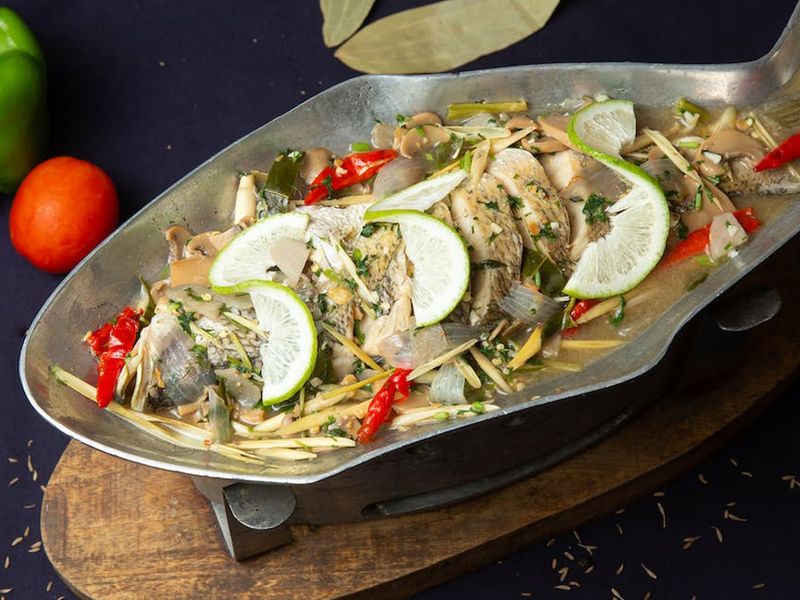
For instance, fish dishes are must-haves in most parts of China during CNY, as the pronunciation of fish sounds like the pronunciation of ‘remain’, so having fish dishes on the CNY Eve means ‘plenty is left at the year-end’.
Additionally, round-shaped foods such as meat balls are also common, as the pronunciation of ‘round’ sounds like the pronunciation of ‘unite’. So round-shaped food carries the meaning of ‘families unite peacefully, and things go smoothly’.
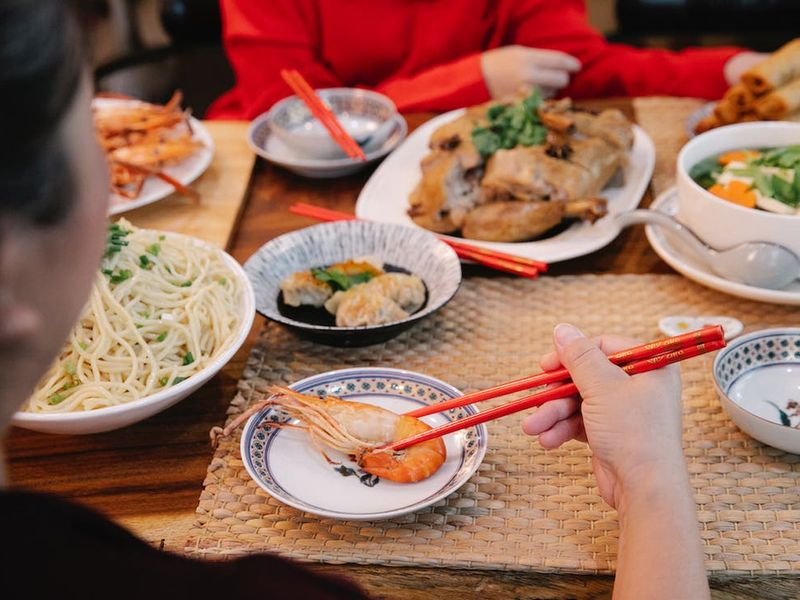
‘Nian gao’ – a glutinous cake made from glutinous yellow millet (in the north), or glutinous rice (in the south), sounds like ‘progressing upwards yearly’. And they are usually filled with red bean and dried jujube date. Undoubtedly, they are very popular due to the good meanings they deliver.
But like mentioned previously, it is not just the pronunciation that matters, the shape of food also does.
Specifically, the shape of dumplings look like the shape of an ancient Chinese currency called ‘yuan bao’ – a type of gold or silver ingot. So a big bowl of dumplings serves the meaning of ‘a life full of fortune’.

Another typical example of how the shape of food conveys good wishes, would be noodles. As one of the main staple foods in northern China, noodles have varied shapes – thin, wide, long, short, prismatic - some of the noodles are even named after their shapes, such as ‘cat ear’ and ‘baby fish’, due to the fact that the shape of the noodles look like cat ears and baby fish. One particular shape of noodles – the long strips, alludes to the meaning of a long life. As a result, they are often served to the old.
Oh, as a digression, you might be surprised to know that noodles in China are made from diverse types of starches ranging from wheat, buckwheat, sorghum, rice, potato, sweet potato, corn and mung bean.
Let’s not forget the colours.
A special type of cooking method – ‘hong shao’, which is essentially braising ingredients with a combination of sauces, including tomato sauce, soy sauce, Chinese vinegar, Chinese cooking wine and rock candy, makes the dish look red. And the red colour is a symbol of prosperity in the Chinese culture. So, you guessed it, ‘hong shao’ cooking method is frequently used to prepare CNY Eve dinner.
Inclusive cooking
Other than good wishes of the dishes, the dinner is also as inclusive as it gets, to really bring out the celebratory spirit.
You can expect several types of meat, vegetable and bean products on the table. And it is not just the ingredients that are inclusive - many cooking techniques are also used, including steaming, stewing, braising, deep frying, stir frying, simmering, roasting, boiling, pickling, air-drying, smoking - basically, nothing is missed out.
Snacks and tea
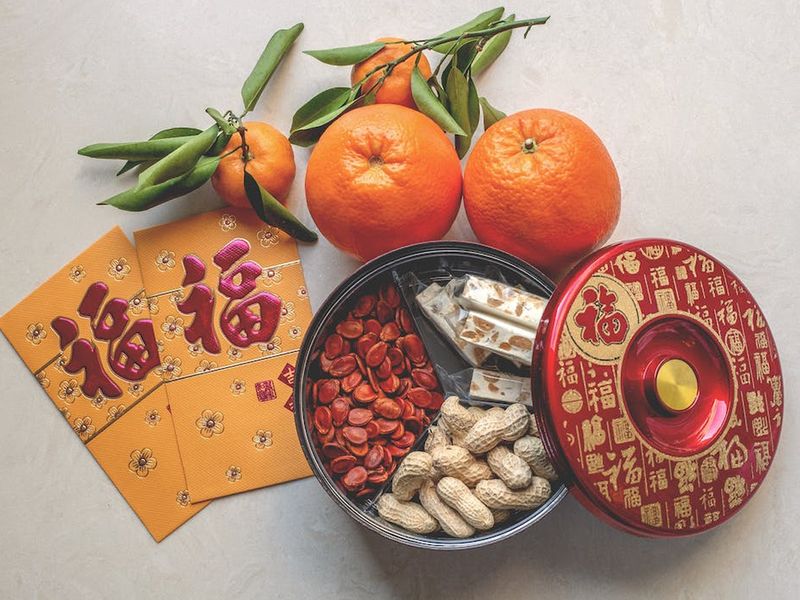
Snacks and tea are often provided before and after dinner, for people during their casual conversations.
You can find a wide selection of snacks on the table before and after the main meal, in fact, they are placed there all day long, so that when visitors come to the house, they can sit and chat with the family members, along with these snacks.
The snacks include various dried nuts, such as peanut, sun flower seed, walnut, pistachio, as well as small candies and chocolates. Fresh fruits, such as apple, pear, orange, as well as candied fruits, like jujube date, apricot, kiwi and coconut can also be found on the table.
Together with the snacks, tea is often served.

Chinese tea leaves are usually kept whole, rather than crashed into small pieces. There are numerous types of tea leaves in China, but in general they are categorised into seven types: green tea (no fermentation), white tea (below-light fermentation), yellow tea (light fermentation), oolong tea (medium fermentation), dark tea (over-medium fermentation), black tea (full fermentation).
As the degree of fermentation intensifies, the colour of the tea goes from light green, to yellowish green, to yellow, to greenish brown, to dark green and finally to black. The tea water turns into different colours based on the type of tea leaves inside of it – it can turn light green, yellowish green, yellow, greenish brown, or reddish brown.
Besides, you may want to know that ‘black tea’ is translated as ‘red tea’ in Chinese. And ‘black tea’ in Chinese can be translated into ‘dark tea’. I know - it is quite confusing.
After the introduction of common dietary habits, snacks and tea, you may want to know what the representative dishes are in different areas of China. Well, let me introduce you to the different dishes prepared in the north and the south of China, during the CNY eve.
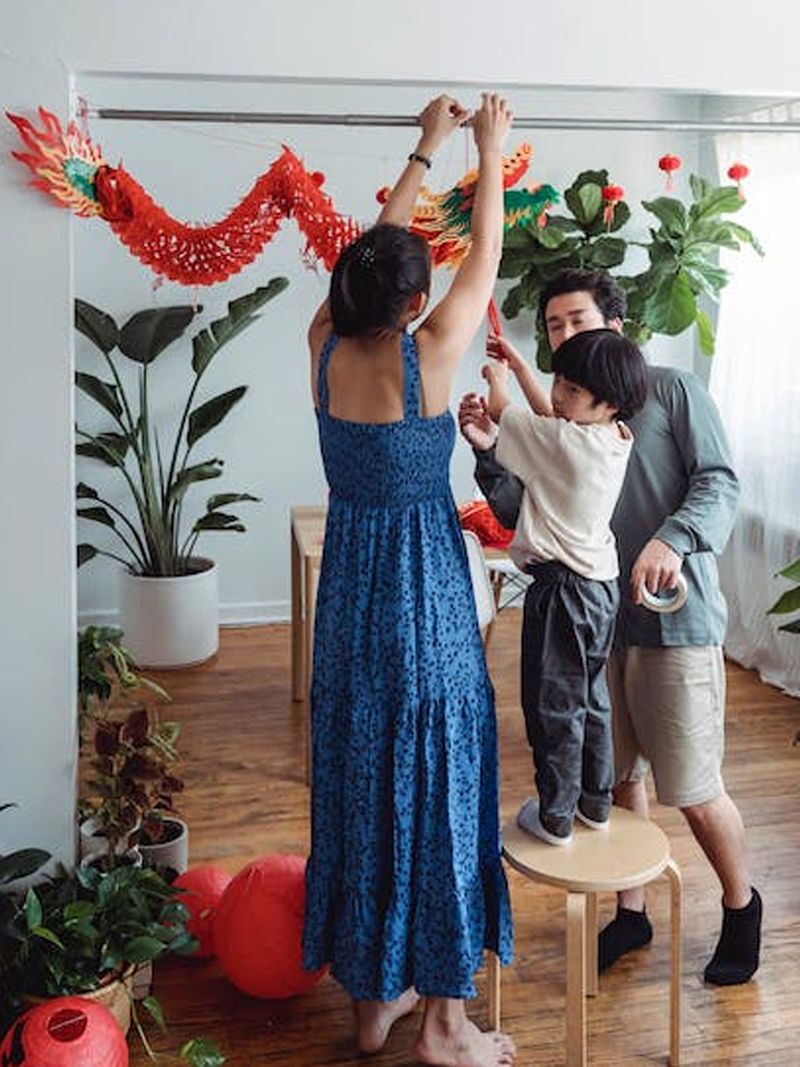
Representative dishes in the north
In most of the northern households, ‘jiao zi’ – dumplings, are a classic dish that is linked to celebrations. We make and consume dumplings when good things happen – things like graduation, university acceptance, family gathering and moving into a new house. As you can imagine, dumplings are certainly must-haves in the north during the most celebrated time in China – the CNY eve.
The fillings inside of a dumpling can be virtually anything – they are often a combination of seafood, meat, eggs, mushrooms, tofu and vegetables.
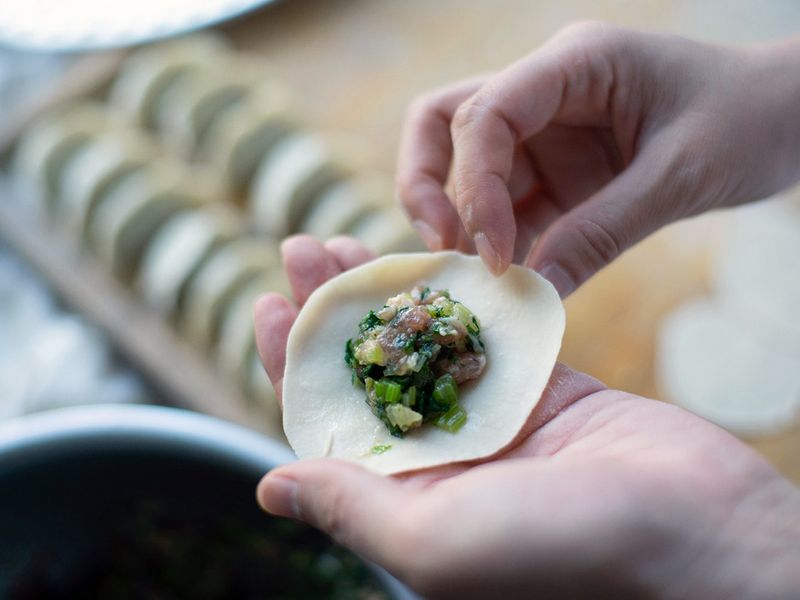
Some common combinations of dumpling fillings in the place where I grew up, Hebei province in the north of China, are:
Chinese chives with eggs, dried baby shrimps and mung bean noodles, along with 13-spice powder, which includes powdered orange zest, cinnamon, cumin, ginger, Angelica or wild celery, Sichuan peppercorn, star anise, nutmeg, galangal ginger, white pepper, cloves, liquorice, and cardamom, along with light soy sauce, dark soy sauce and sesame oil.
Napa cabbage with eggs and oyster mushroom, along with 13-spice powder, light soy sauce, dark soy sauce, sesame oil, ginger, spring onion and garlic.
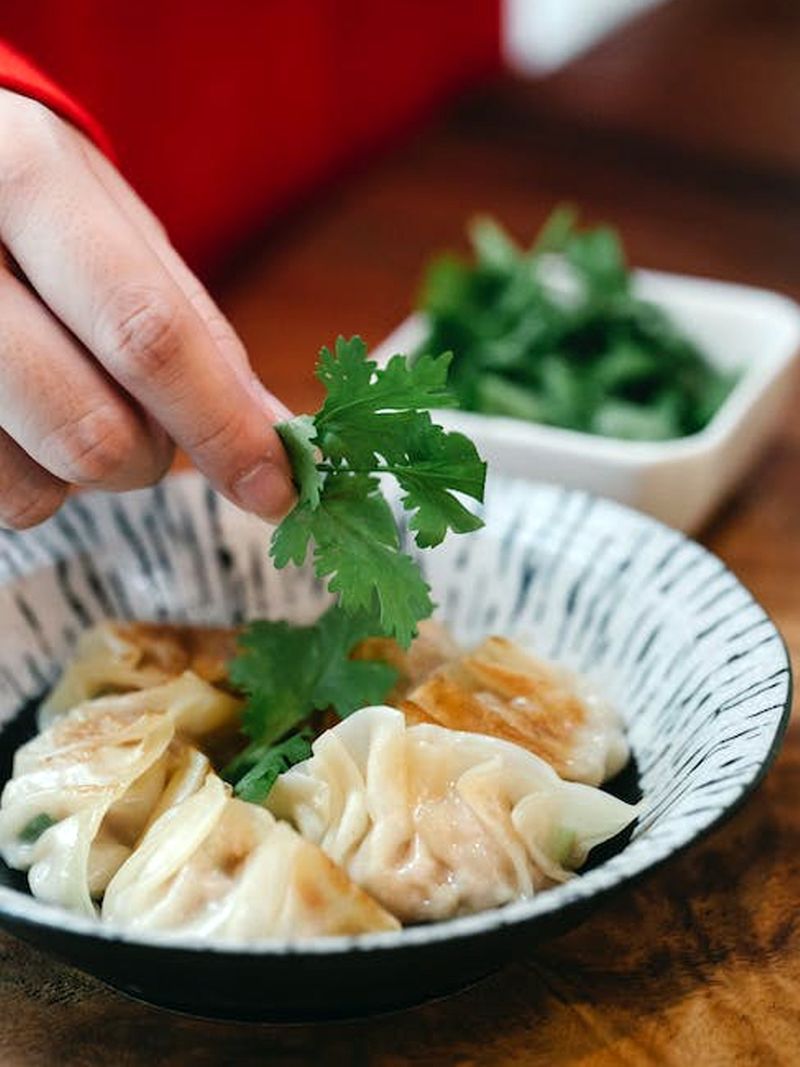
Carrots (can be replaced by Chinese white radish) with lamb mince, along with 5-spice powder, which includes star anise, fennel seed, Sichuan peppercorn, cloves and cinnamon, along with light soy sauce, dark soy sauce, sesame oil, spring onion and ginger.
The dumplings are boiled and served with Chinese black vinegar – fermented from sorghum, bran, wheat and pea, mixed with smashed garlic paste (you can leave out the garlic paste if you are not a fan of it) and sesame oil.
Overnight boiled dumplings can be pan-fried with vegetable oil the next day - which adds a crunch, and another depth of flavour to the original.
DUMPLING RECIPE
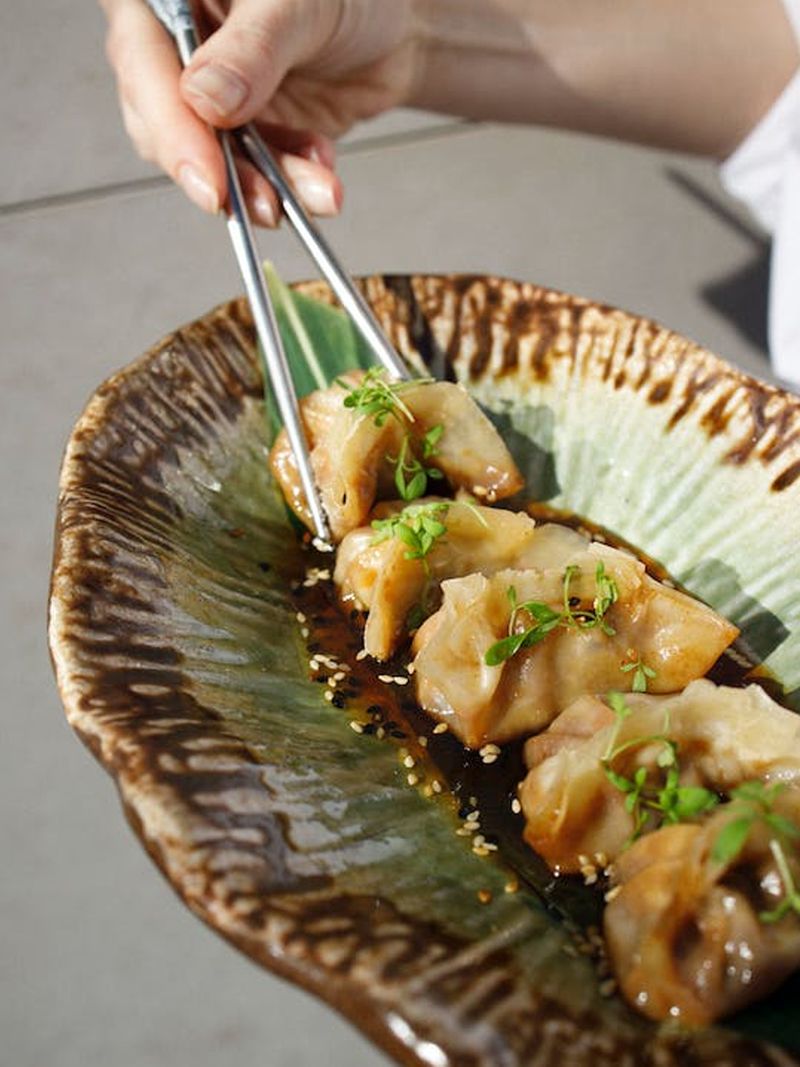
Chinese New Year dumplings with carrots and minced lamb
By Guiqing Li, Special to Gulf News
Preparation time: 4 hours
Cooking time: 15 minutes
Serves: 5 (makes 70 dumplings in total)
Ingredients of the dough for making dumpling skin:
400 gms medium-gluten flour
190 gms room temperature water
Ingredients of the dumpling fillings:
500gms minced lamb (preferably with fat)
1/8 tsp five spices – Sichuan peppercorn powder, cinnamon powder, star anise powder, cumin powder, clove powder
3 pieces of spring onions (minced)
1 tbsp ginger (minced)
1 tbsp light soy sauce
1 tbsp dark soy sauce
¼ tsp salt
2 tbsp sesame oil
Ingredients of the dipping sauce:
1 tbsp chinese dark vinegar
¼ tsp sesame oil
5 pieces garlic (paste)
Method
Step 1
Making the dough
• Mix water and flour together and knead the dough till it is smooth.
• Cover the dough with a wet cloth, and let the dough rest for 30 minutes.
Step 2
Making the dumpling filling
• While the dough is resting, make the dumpling filling by mixing all ingredients for the filling together.
• Then stir in one direction till they mix well.
According to my grandma, the reason to stir in one direction is that this way, the spices and sauces can immerse in the ingredients better and faster.
Step 3
Making the dumpling wraps
• Take out the dough, cut into smaller blocks similar to a fist-size, knead the fist-size dough for 2 minutes.
• Then roll the dough into a long strip, and cut the strip into small pieces similar to a walnut.
• Afterwards, use a dumpling wrap rolling pin to roll the walnut-sized dough into a thin round shape.
• The round piece should ideally be thicker in the middle and thin on the edge, so that later on, the fillings will not be squeezed out from the bottom and it is easier to close the dumplings from the edge.
Step 4
Shaping the dumplings
• Place the round piece of dough on your palm, put suitable amount of fillings on the center of it, so that it leaves enough space on the edges.
• Fold the piece.
• Then put pressure on the folded edges so that the dumpling is closed and all fillings are wrapped inside. The shape of a dumpling should look something like a plump, crescent moon.
Step 5
Cooking the dumplings
• Repeat step 3 and 4 till all ingredients are used up.
• Use a boiling pot, and fill ¾ of it with water.
• Bring the water to boil, put dumplings inside the boiling water. Make sure that you put a limited amount of dumplings to avoid crowding of the pot - again according to my grandma, if you crowd the pot, the dumplings can break easily while boiling.
• Boil till the dumplings float on the surface of the water, then add a splash of water to bring down the boil. When it starts to boil the second time, again add a splash of water to bring down the boil. Repeat the step for a third time.
• Then take one dumpling out and taste if the inside filling is cooked. If it is cooked, use a colander to take all the dumplings out.
• Cook the remainder of the dumplings the same way.
Step 6
Making the dipping sauce
• Mix Chinese dark vinegar and sesame oil together. Add garlic paste at your convenience.
• Serve the dumplings with the dipping sauce.
Representative dishes in the south of China
Xueyi Yu, 31 years old, from Guangdong province, has told me that ‘pen cai’ is a traditional dish that is on nearly every family’s dinner table on CNY Eve in her province.

‘Pen cai’, with the literal meaning of ‘a big pot of ingredients’, consists of dozens of ingredients including chicken, duck, fish, oyster, squid, shrimps, clams, tofu skin, carrot, Chinese white radish, shiitake mushroom, wood ear mushroom, water chestnut and kudzu root.
Although the ingredients mentioned above are common ingredients in the pot, they are not fixed - people can choose to add things according to their preferences.
“It is the most important dish in my province.” Xueyi said. “This dish carries the meaning of having a well-fed and well-clothed life, for it is the ultimate version of ‘having everything together’.”
Cooking of the dish takes days, as some ingredients need to be cooked in advance, before they go in the pot in the end. Xueyi added, “It is important that the ingredients are categorised, and put in the pot in layers.
“The bottom layer consists of ingredients that should be cooked for the longest time, like wood ear mushroom, kudzu root, water chestnut. The middle layer should contain ingredients that will soak up juices and sauces, like tofu puff and tofu skin.
“Cooked and ready-to-eat food such as fried fish and boiled meatballs, or food that can be cooked easily, such as leafy vegetables, should be placed on the top layer.”
After placing all layers of ingredients, grass carp fish stock is poured into the pot. Finally, the whole pot of ingredients is first boiled, then simmered for about 10 minutes, before it is served on the table.
SEAFOOD RECIPE
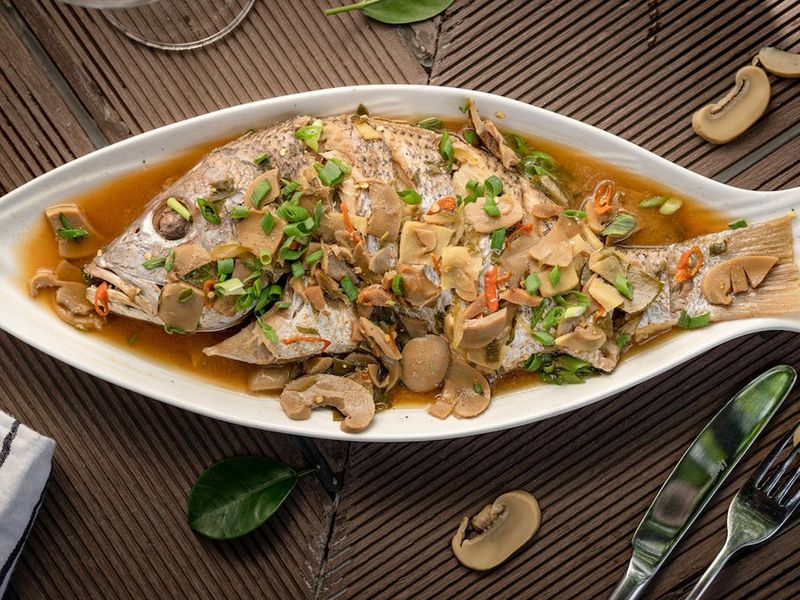
Chinese New Year steamed grouper recipe from the south of China, Guangdong province
By Xueyi Yu, Special to Gulf News
Preparation time: 30 minutes
Cooking time: 30 minutes
Serves: 3 to 4
Ingredients
600 gms a whole grouper fish (cleaned and gutted)
3 spring onions
1 inch piece of ginger
1 red bell pepper
5 sprigs of coriander
50 gms white sugar
100 gms special soy sauce for steamed fish
200 gms normal soy sauce
½ cup peanut oil
Method
Step 1
First preparation of vegetables
• Slice the ginger into thin pieces.
• Chop 2 spring onions into 8cm strips in length.
• Place half of the sliced ginger and chopped spring onion on an empty plate that is big enough for the size of your fish.
Step 2
Preparation of the fish
• Clean the fish.
• Place cleaned fish on top of the ginger and spring onion in the plate.
• Put the remainder of sliced ginger and chopped spring onion from step 1 on the fish.
Step 3
Steam cooking of the fish
• Put the plate in a steamer.
• Turn on big fire and steam for about 10 minutes.
Step 4
Second preparation of vegetables
• While the fish is being steamed. Cut the remainder of spring onion, and red bell pepper into 8cm pieces in length, like matchsticks.
• Cut the coriander into 8cm pieces in length.
Step 5
Garnishing the fish
• Take the plate out of the steamer after 10 minutes.
• Pour any excess juice out.
• Pick previously placed ginger and spring onion out. Place newly sliced spring onion, red bell pepper, and coriander from step 4 on the fish.
Step 6
Saucing the dish
• Mix normal soy sauce, special soy sauce for steamed fish and white sugar together well.
• Pour the mixture from the side of the fish into the plate, so that the sauce will not destroy the layout of vegetables placed on the top of the fish.
Step 7
Final cooking of the fish
• Heat the peanut oil till it is hot.
• Immediately pour the hot oil on the vegetables placed on the fish.
The dish is ready to be served.
Chinese New Year is essentially a time of family, a time of hope and a time to celebrate life – something that millions of Chinese hold very dear to their heart. Make these recipes at home and share in this joy....
Share your favourite food story with us at food@gulfnews.com



